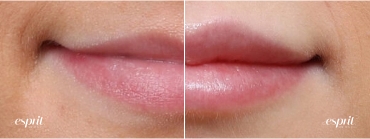Saline breast implants are filled with a salt-water solution. The outer shell of the implant is made of a silicone elastomer (a rubber-like material), like a silicone gel filled implant. Esprit® Cosmetic Surgeons helps women in Portland determine if saline implants are right for them. We recommend choose silicone-gel filled breast implants and silicone is the implant of choice for nearly all women. Here are the things to know:
Saline Versus Silicone Gel Breast Implants
Millions of women have had successful breast augmentations with saline and silicone breast implants. So, which breast implant is best for you? We break down the issue into four key points. One is the actual aesthetic appearance achieved. Two is the feel the breasts have after implantation. Three are the implications of implant failure. And four is the impact of the implants on the maintenance of breast health.
Appearance Of The Augmented Breast
In most women with thick breasts, the overall shape and look of the breasts will be similar with either round saline or round silicone gel breast implants. However, there is a key distinguishing feature; the risk of implant visibility.
In patients with moderate or thick breast tissue padding over the implants, visible ripples probably won’t occur even with saline filled breast implants. In very thin patients, ripples probably will occur with saline implants.
Feel Of The Augmented Breast
The second key issue is: how do saline and silicone gel breast implants compare in terms of the feel of the augmented breast?
In patients with thick breast tissue over the implants, the breasts will have a similar feel, though the mushier silicone gel implant usually feels a bit softer and more natural than saline. In patients with thin or moderate soft tissue coverage, saline implants will be easier to feel than silicone gel implants. Simply put: Silicone implants usually feel the best.
Breast Implant Failure
The third issue to consider is the difference in saline and silicone gel breast implants regarding the implications of implant failure. If a saline breast implant breaks, saline will leak from the implant. The implant will deflate rapidly, and the smaller, deflated breast will usually be obvious in a day or two.
Failure of a silicone gel breast implant may lead to reactions in and around the breast tissues. The seeping of gel could lead to tissue reactions, such as capsular contracture or formation of nodules. Current generation silicone gel breast implants are less likely to cause such local complications. If a current generation silicone gel implant breaks, the silicone gel inside the shell will bulge from the implant but not run into the surrounding tissues.
Maintenance Of Breast Health
With a saline breast implant a leak is usually obvious since the implant deflates and the breast shrinks. The salt water from the implant is absorbed by the body naturally and is harmless.
When a silicone gel breast implant breaks, the breast usually maintains its shape, so the leak will not be obvious to the patient or a physician. Silicone gel implant failure can only be confirmed with an imaging study, such as an ultrasound or MRI. The FDA recommends that women get an ultrasound or MRI every few years to check on the integrity the implants and if a break is found the implant should be replaced.
Replacement of a silicone gel implant is like a saline implant, except that with silicone gel, some of the sticky gel material may need to be removed and cleansed from the soft tissue capsule around the implant.
Contact Esprit® Cosmetic Surgeons in Portland for more information on saline Implants or to schedule a consultation. Call (503) 783-0544 or use our online form today.






